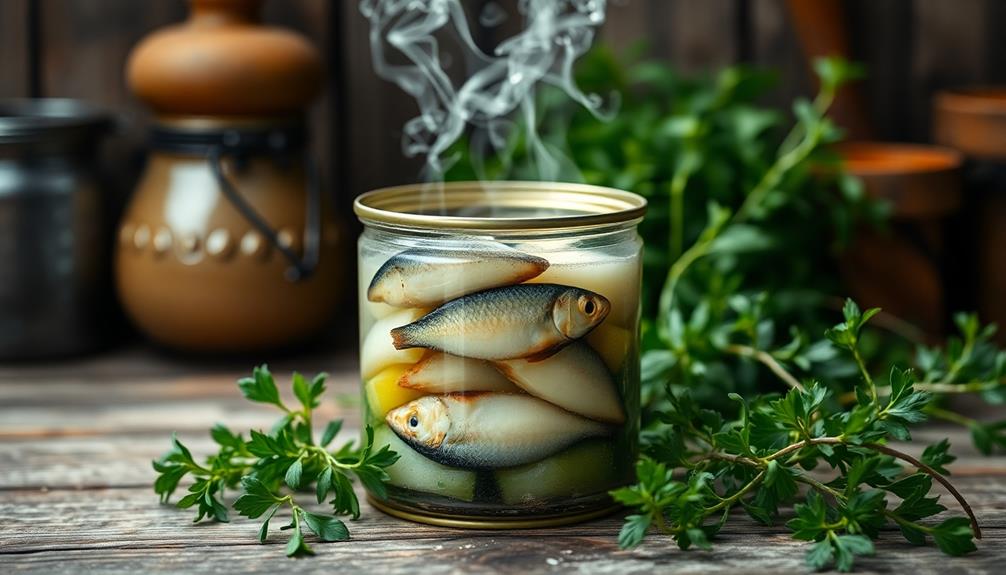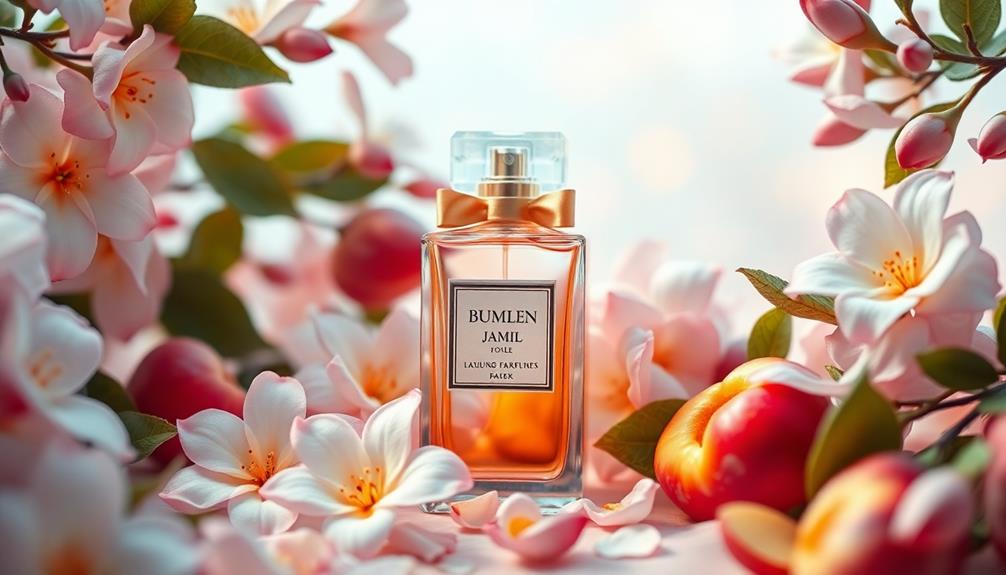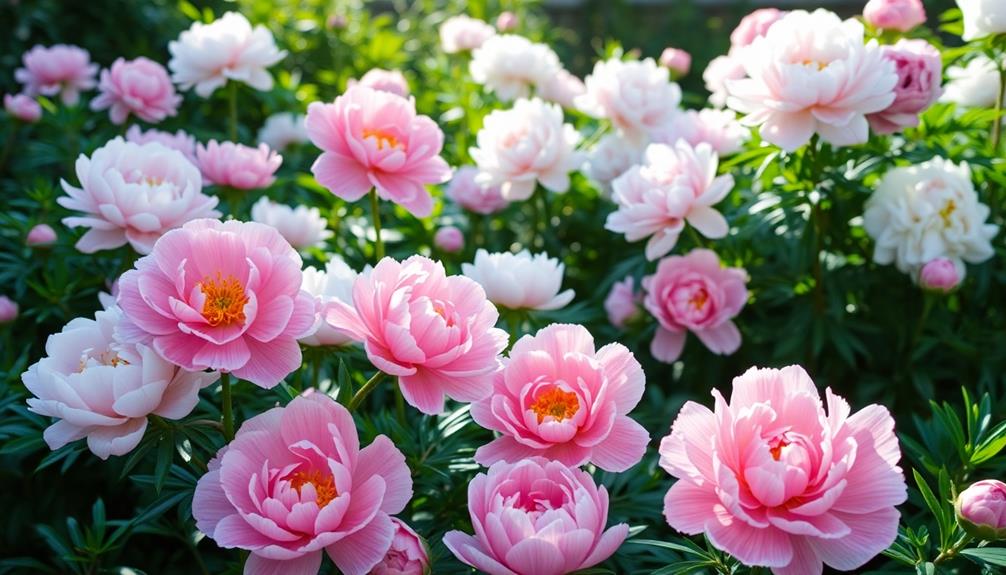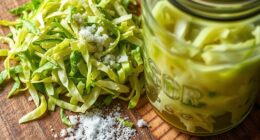Surströmming, a traditional Swedish dish made from fermented herring, has a smell that's hard to forget! You'd probably describe it as a mix of rotten fish, sharp vinegar, and overripe fruit. It's a salty aroma too, reminiscent of the sea. When you crack open a can, be ready for a strong whiff that might shock your senses! It's best to enjoy this unique treat outdoors, where the smell won't linger. Despite its intense aroma, the taste can be surprising. So, if you're up for a culinary adventure, there's more to discover about this fascinating dish!
Key Takeaways
- Surströmming has an intense odor described as a mix of rotten fish, sharp vinegar, and overripe fruit.
- The salty aroma resembles the sea, combined with a distinct fermented note.
- The first whiff can be overwhelming and may prompt disbelief from newcomers.
- Despite the strong smell, the taste can be surprisingly different and enjoyable.
- It is recommended to open cans outdoors to minimize the lingering odor for others.
Introduction

Surströmming, a traditional Swedish delicacy, is infamous for its strong odor that can be both intriguing and off-putting. You might wonder why anyone would eat something that smells so intense. Well, it's all about the experience!
Surströmming is fermented herring, and it's been a part of Swedish culture for centuries. People often enjoy it during a special event called "Surströmmingspremiär" or "Surströmming Premiere," which takes place in August.
When you first try surströmming, it's essential to approach it with an open mind. You'll usually find it served with thin flatbreads, potatoes, and onions. Many Swedes believe that eating it outdoors is the best way to enjoy its unique flavor. Plus, it helps keep the smell from lingering too long inside.
If you're feeling adventurous, trying surströmming could be a fun challenge! Just remember, patience is key, and it helps to have a few friends around for support. They might even join you in tasting this unusual dish.
Description of the Smell
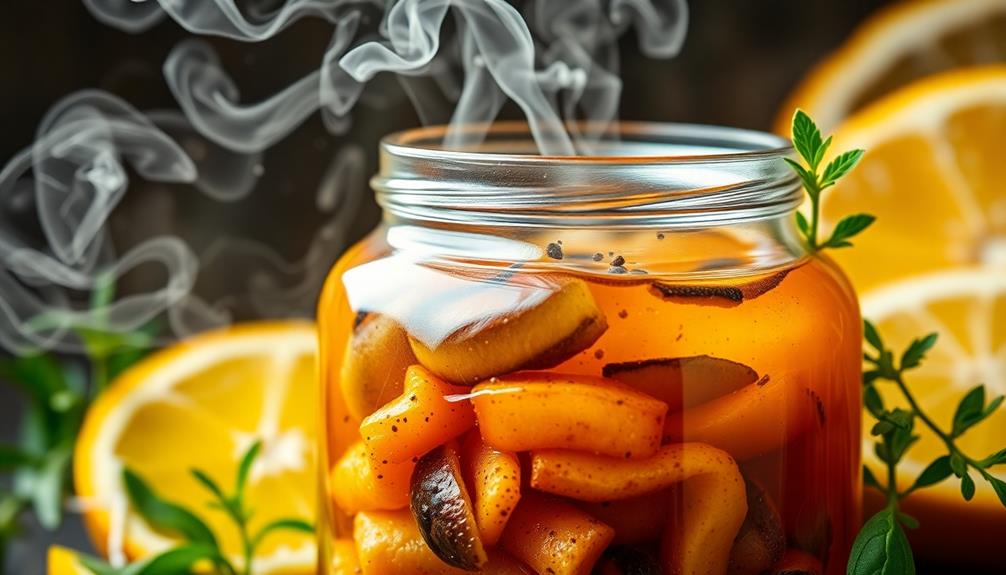
When you crack open a can of surströmming, prepare for an assault on your senses. The first whiff hits you like a tidal wave, a pungent mix that's hard to ignore. You might describe it as a blend of strong, rotten fish, sharp vinegar, and something almost like overripe fruit. It's not just an ordinary smell; it's a unique experience that can make you question your life choices in the moment.
As the scent fills the air, you'll likely notice a salty aroma, reminiscent of the sea, but it's intertwined with an unmistakable, fermented note that can be quite overwhelming. You might find yourself crinkling your nose, wondering why anyone would want to eat this.
But fear not! Many who try surströmming say that the taste is surprisingly different from the smell.
For the brave souls willing to dive into this adventure, serving it outdoors is a smart idea. You'll want to open that can away from your friends, unless you're eager for a good laugh.
Source and Composition
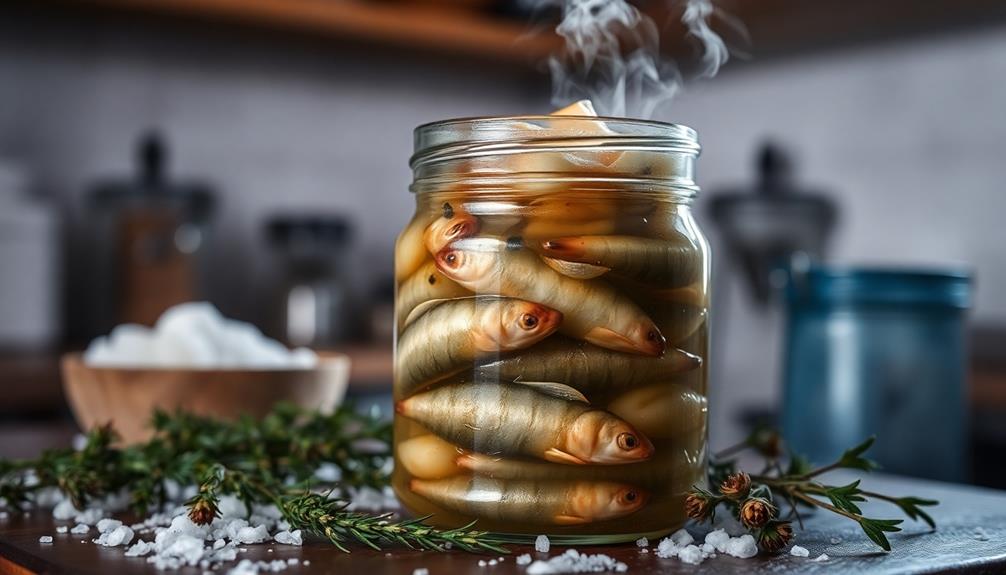
The origins of surströmming trace back to Sweden, where herring is the star ingredient. This fermented fish dish is made using Baltic Sea herring, which is caught in spring. The fish is then salted and left to ferment in barrels for several months. This process creates a unique sour smell that's become famous, or infamous, depending on who you ask!
Surströmming's composition is simple yet intriguing. The herring is packed with salt, which helps kickstart the fermentation process. As it ferments, the fish breaks down, producing various acids and gases that contribute to its strong aroma.
You might think of it as a science experiment gone wild, where the end result is something truly different.
You'll find that surströmming is often sold in cans, which helps preserve its pungent scent and flavor. When you open one, be prepared—its smell can quickly fill the room!
And while you mightn't want to sniff too deeply, many fans appreciate the rich history and tradition that comes with each can. So, if you're brave enough to try it, remember that you're tasting a piece of Swedish culture!
Typical Scenarios or Environments

Surströmming often takes center stage at Swedish summer festivities, like Midsummer celebrations and family gatherings.
Picture yourself at a sunny picnic, surrounded by friends and family, as someone opens a can of this famously fermented fish. The air fills with a strong, pungent odor that might catch you off guard! You might see a mix of expressions—some people are laughing while others wrinkle their noses in disbelief. It's all part of the experience.
You'll often find surströmming served with flatbreads, potatoes, and onions, making it a unique addition to the meal. Many people enjoy the challenge of tasting it, making it a fun activity for those brave enough to try.
You can even join in on the tradition of eating surströmming outdoors, where the smell is less overwhelming.
In some cases, you might encounter surströmming at themed dinners or food festivals, where chefs get creative with this classic dish. It's a way to celebrate Swedish culture while providing a memorable culinary adventure.
Emotional or Cultural Associations

How does a unique dish like surströmming become intertwined with cultural identity? For many Swedes, surströmming isn't just food; it's a tradition that connects generations. When you crack open a can, you're not just unleashing a strong smell; you're also opening a window into Swedish history and community bonding.
Imagine gathering with friends and family to enjoy a surströmming party, sharing laughs and stories over this fermented herring. It's a social event, where everyone participates in peeling potatoes or preparing flatbreads to complement the dish.
You'll find that the smell, while intense, often brings back memories for those who've grown up with it. Surströmming can stir up pride, as it represents a way of life that's been preserved for centuries.
People might joke about the smell, but they also celebrate its uniqueness, knowing it's a vital piece of their cultural puzzle. This dish may seem strange to outsiders, but it acts as a bridge, inviting you to experience Swedish customs and culinary adventures.
Health or Safety Considerations

Enjoying surströmming comes with a few health and safety considerations that you should keep in mind.
First, it's important to note that surströmming is a fermented fish product, so ensure you're not allergic to fish before diving in. If you have a sensitive stomach or any digestive issues, you might want to approach this dish with caution.
When you open a can of surströmming, the smell can be quite overpowering. To avoid overwhelming your senses, consider opening it outside or in a well-ventilated area. You wouldn't want to send your friends running for fresh air, right?
Also, remember to wash your hands and any utensils thoroughly after handling surströmming. The strong odor can linger, and you wouldn't want to accidentally transfer that smell to something else.
Lastly, if you're new to trying surströmming, start with a small amount. This way, you can gauge your reaction without going overboard. After all, you want your experience to be enjoyable, not regrettable!
Final Thoughts
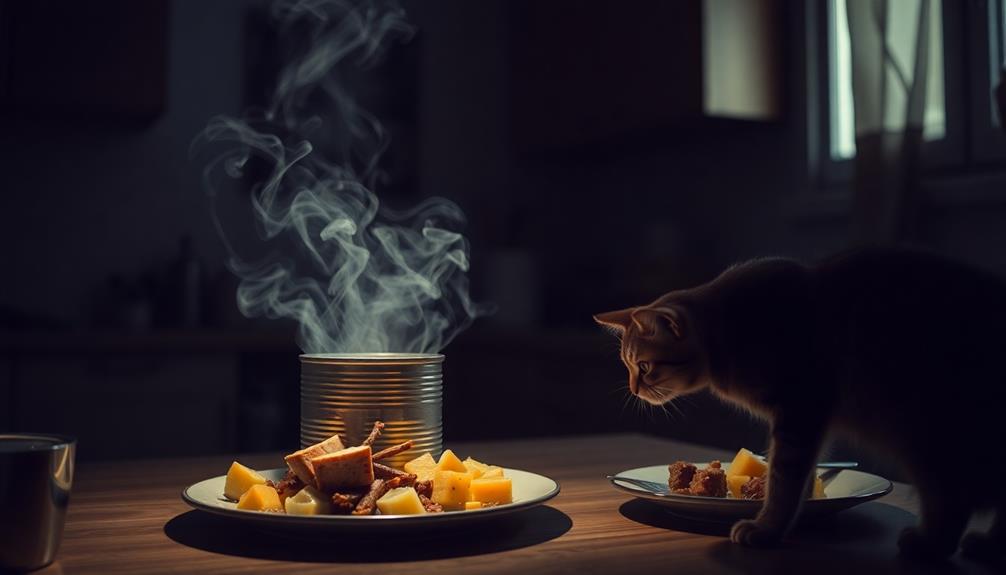
While trying surströmming can be an adventurous culinary experience, it's essential to approach it with an open mind and a bit of caution. This unique Swedish dish isn't just food; it's a cultural experience packed with strong smells and flavors.
If you decide to give it a go, make sure you're ready for the pungent aroma that'll greet you when you crack open the can. It's like opening a treasure chest, but instead of gold, you find a whiff of something very, very fishy!
Gather some friends for support—after all, it's always better to share a wild experience. Pairing surströmming with traditional accompaniments, like flatbread and potatoes, can help balance the flavors.
If you find it overwhelming, don't worry; many people do! Just remember that trying new foods is part of the fun.
In the end, whether you love it or can't stand it, you'll have a story to tell. Embrace the adventure, and who knows? You might just discover a new favorite dish, or at least a great conversation starter!
Frequently Asked Questions
How Is Surströmming Traditionally Served in Sweden?
Surströmming's traditionally served with thin flatbreads, boiled potatoes, and onion. You'll often find it accompanied by sour cream and crispbread, making a unique Swedish feast that you won't forget any time soon!
Can Surströmming Be Used in Recipes or Dishes?
Yes, you can use surströmming in recipes! It adds a unique flavor to dishes like sandwiches, salads, or potato dishes. Just remember to balance its strong taste with milder ingredients for a delicious meal.
What Are Some Popular Brands of Surströmming?
When you're exploring surströmming, some popular brands to consider are Ekelund, Röda Ulven, and Abba. Each offers a unique take on this fermented herring, so you'll find something to suit your taste.
Is Surströmming Legal to Import in All Countries?
You'll find that surströmming isn't legal to import in every country. Some nations impose strict regulations or outright bans due to its strong odor and fermentation process, so check local laws before attempting to import it.
How Long Can Surströmming Be Stored Before It Spoils?
You can store surströmming for about six months unopened, but once you open it, it's best consumed within a few days. Always check for any signs of spoilage before enjoying this unique delicacy.

